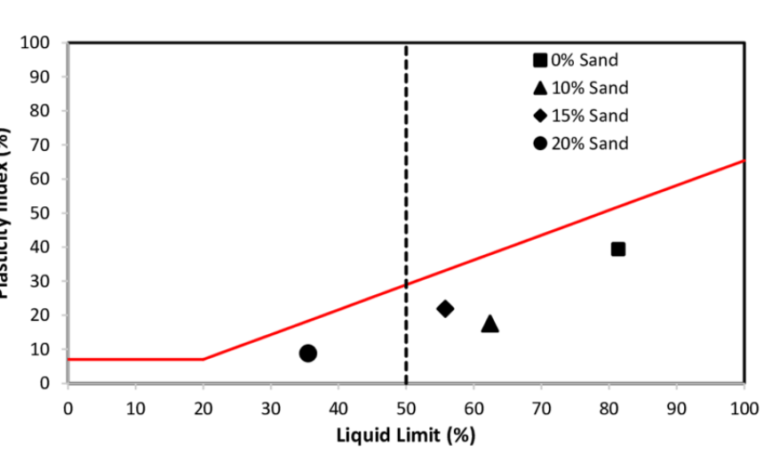Unveiling the Significance of Atterberg Limits in Soil Behavior

Understanding the behavior of soil is indispensable in various engineering projects, ranging from construction to environmental management. Atterberg Limits, named after Swedish scientist Albert Atterberg, are critical indicators that delineate the transition phases of soil from solid to plastic and finally to liquid states. These limits play a pivotal role in assessing the plasticity and liquidity characteristics of soil, thereby facilitating informed decisions in engineering endeavors.
Defining Atterberg Limits: Penetrating the Core Concepts
Atterberg Limits encompass three primary parameters: liquid limit (LL), plastic limit (PL), and shrinkage limit (SL). Each limit delineates a distinct phase transition in soil behavior. The liquid limit signifies the moisture content at which soil transforms from a plastic to a liquid state, while the plastic limit demarcates the boundary between plastic and semisolid states. The shrinkage limit denotes the moisture content at which further loss of moisture does not lead to volume reduction.
Significance of Atterberg Limits in Soil Engineering
In geotechnical engineering, Atterberg Limits serve as fundamental parameters in soil classification and characterization. They provide insights into the engineering properties of soil, including its compressibility, shear strength, and settlement characteristics. By evaluating Atterberg Limits, engineers can tailor construction methodologies and foundation designs to suit specific soil conditions, thus mitigating risks and ensuring project sustainability.
Relationship between Atterberg Limits and Soil Behavior
The behavior of soil under different conditions is intricately linked to its Atterberg Limits. For instance, soils with higher plasticity indices (PI) tend to exhibit greater compressibility and lower shear strength, rendering them susceptible to settlement and instability. Conversely, soils with lower plasticity indices demonstrate improved stability and cohesion, making them favorable for construction purposes. By understanding the relationship between Atterberg Limits and soil behavior, engineers can devise effective strategies for soil stabilization, slope stability analysis, and foundation design.
Exploring Atterberg Limits in Various Soil Types
Atterberg Limits vary significantly across different soil types, ranging from cohesive clay to granular sand. Clayey soils typically exhibit higher plasticity indices and lower Atterberg Limits, indicating their propensity for volumetric changes and moisture-induced deformations. In contrast, sandy soils possess lower plasticity indices and higher permeability, resulting in minimal volume changes and greater drainage capabilities. Understanding the Atterberg Limits of diverse soil types is paramount in selecting appropriate construction materials and implementing suitable soil improvement techniques.
FAQs:
Q1: How do Atterberg Limits influence soil stabilization techniques?
A1: Atterberg Limits provide crucial insights into soil behavior, thereby guiding the selection of appropriate stabilization methods. For cohesive soils with high plasticity indices, techniques such as lime stabilization or soil cementation may be employed to enhance strength and reduce settlement.
Q2: Can Atterberg Limits be determined in the field or laboratory?
A2: Atterberg Limits are typically determined through laboratory tests, including the Casagrande method for liquid limit and the plastic limit test. However, field assessments can provide preliminary indications of soil behavior based on visual observations and empirical correlations.
Q3: How do Atterberg Limits impact construction project timelines?
A3: Knowledge of Atterberg Limits enables engineers to anticipate soil behavior and plan construction schedules accordingly. Soil with high plasticity may necessitate additional time for preloading and consolidation, whereas soils with low plasticity may expedite construction activities.
Conclusion:
In conclusion, Atterberg Limits serve as indispensable tools in understanding soil behavior and optimizing engineering practices. By delineating the transition phases of soil from solid to liquid states, these limits empower engineers to make informed decisions regarding soil classification, foundation design, and construction methodologies. As a leading provider of materials testing equipment, certifiedmtp.com remains committed to supporting engineering endeavors by offering high-quality products and technical expertise to meet the evolving needs of the industry.
By crafting this comprehensive guide on Atterberg Limits, we endeavor to enhance awareness and foster a deeper understanding of this critical aspect of geotechnical engineering. Through collaboration and knowledge sharing, we can harness the power of Atterberg Limits to drive innovation and excellence in the field of soil mechanics and construction engineering.




